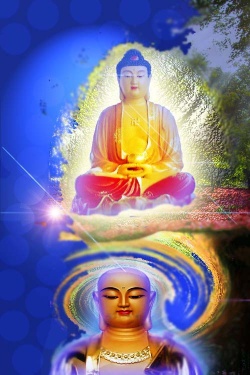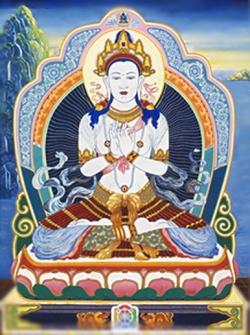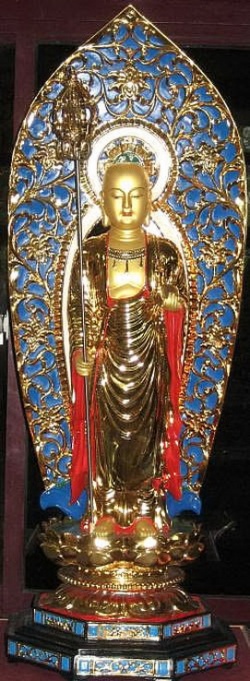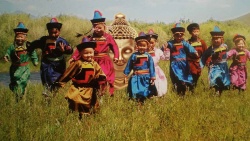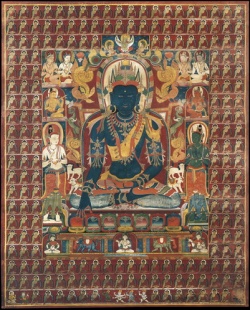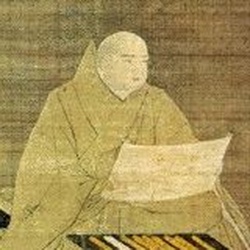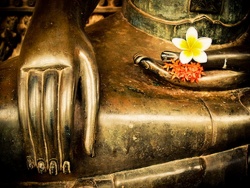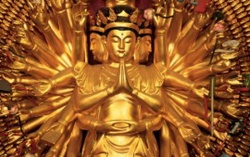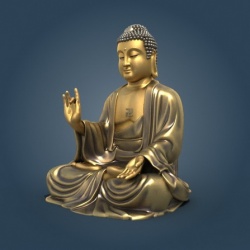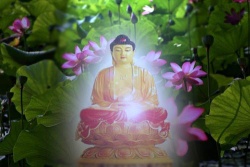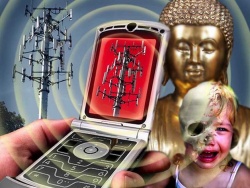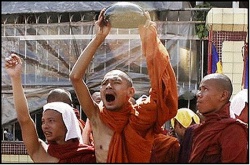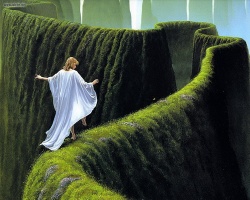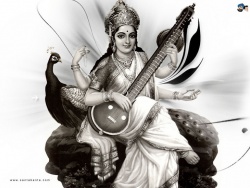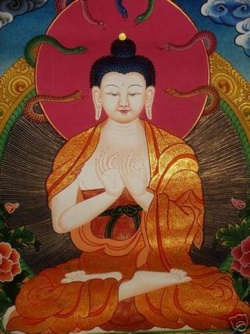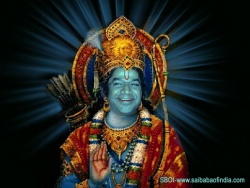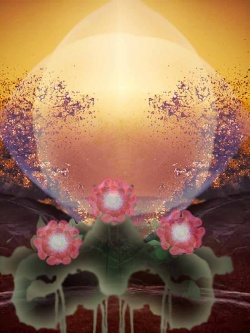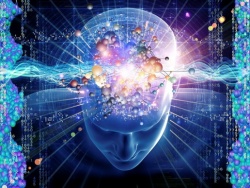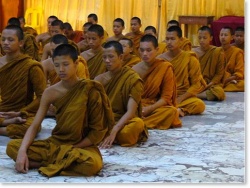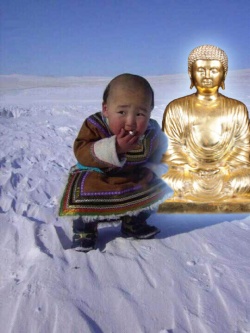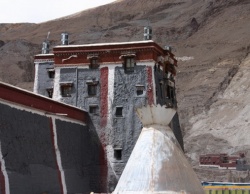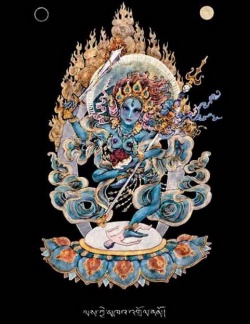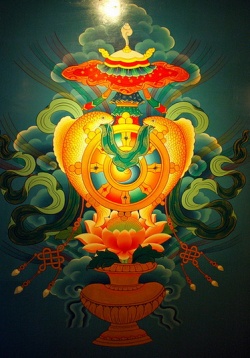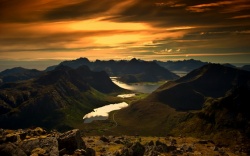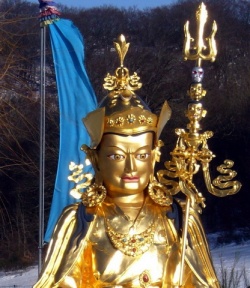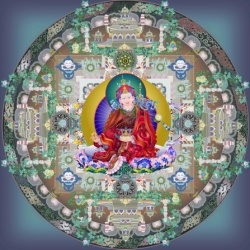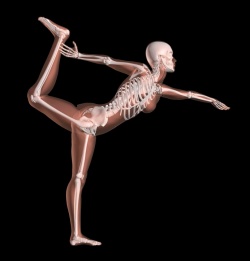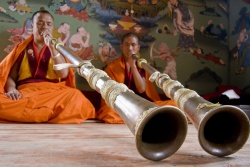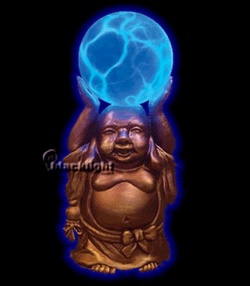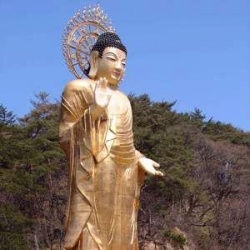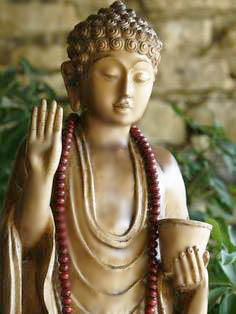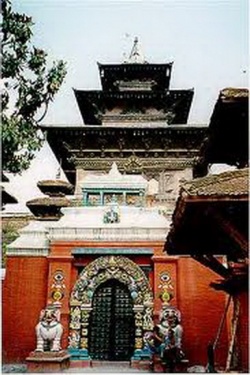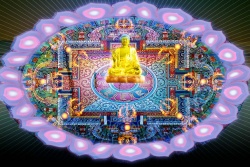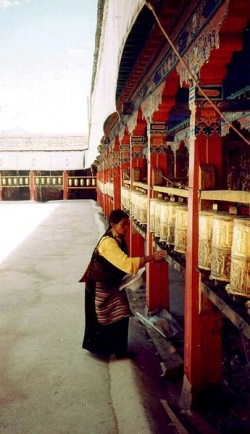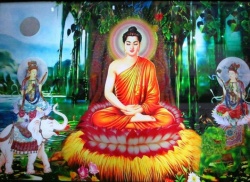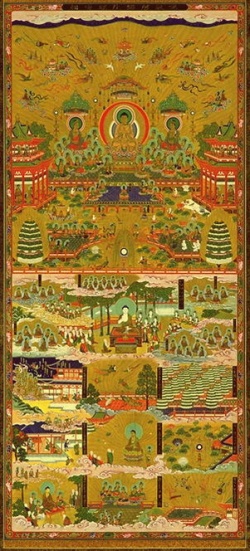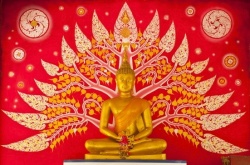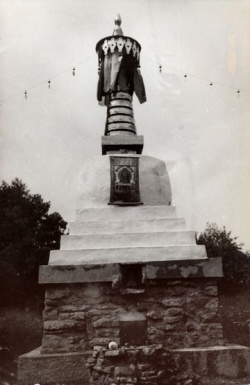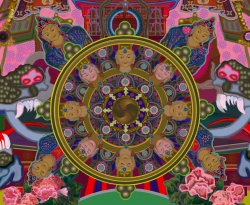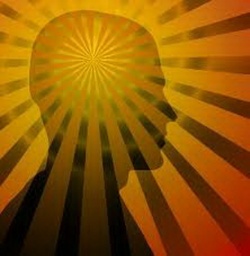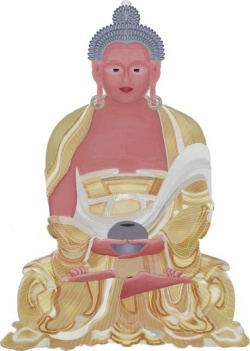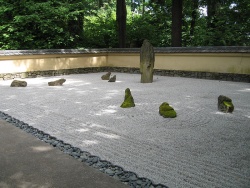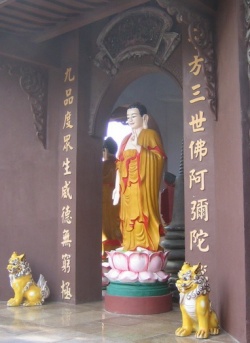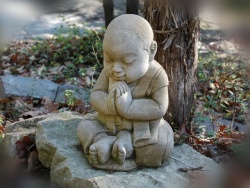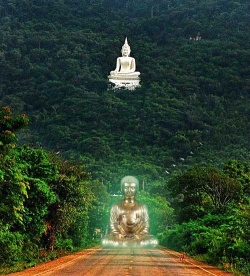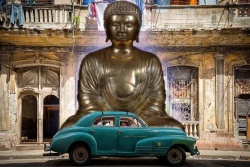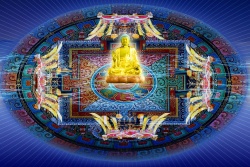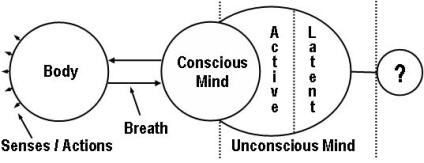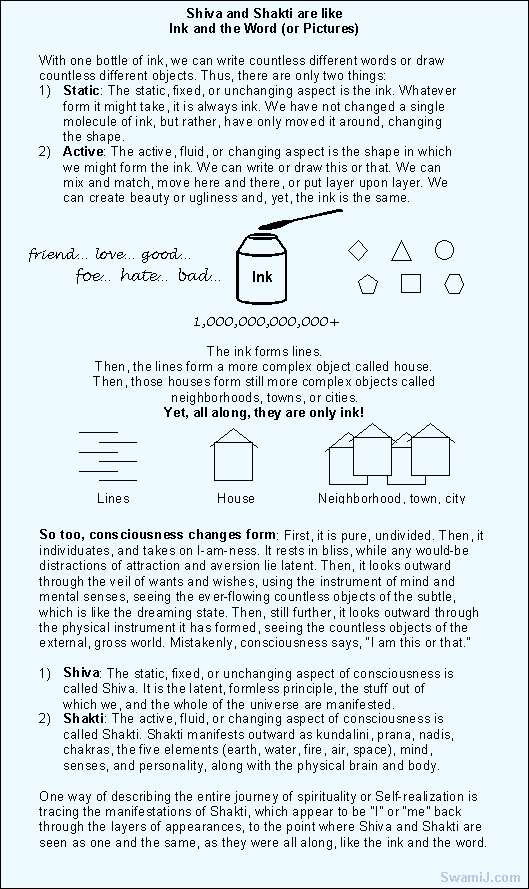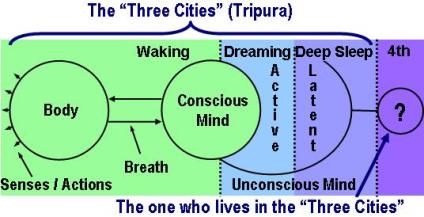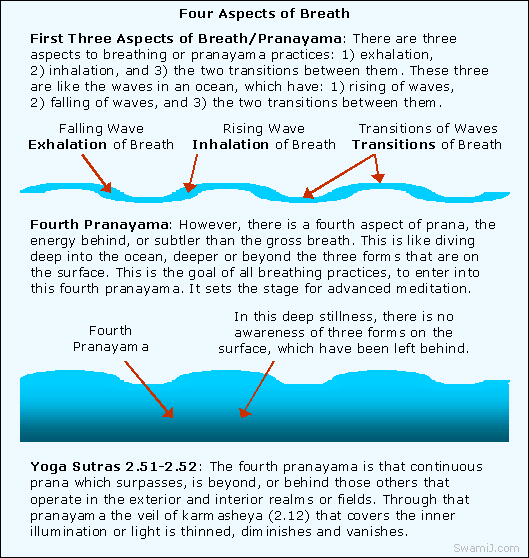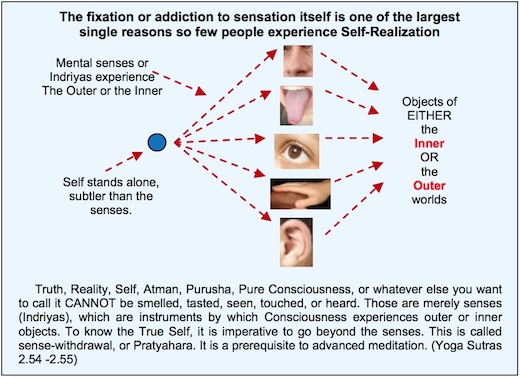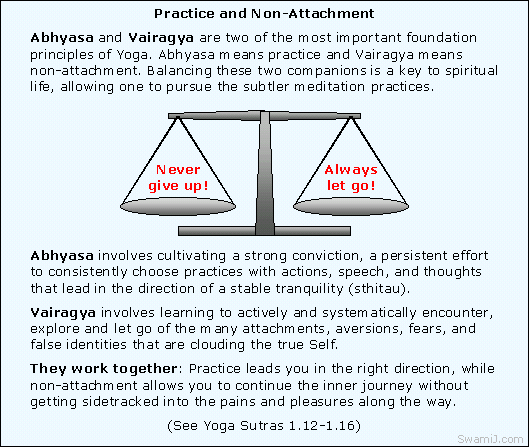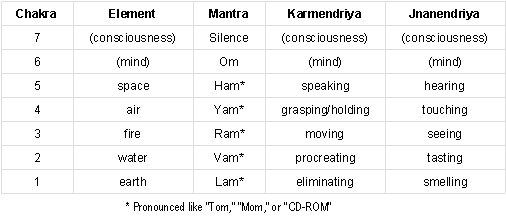Kundalini Awakening
Click pictures to get to text | |||||
1 |
2 |
3 |
4 |
5 |
6 |

|

|

|

|

|

|
Kundalini is innate for all people: At the base of the spine, subtler than the physical body, lies the Kundalini energy, or spiritual energy, in a latent form. Regardless of what religious, spiritual, or meditation tradition one follows, the awakening of this energy, by whatever name you call it, is a most innate and essential part of spiritual advancement, unfoldment, or realization.
All Yoga is Kundalini Yoga: While some people use a specific terminology "Kundalini Yoga" for certain practices, all of Yoga actually leads to the activation of Kundalini. Thus, in a sense, all of Yoga is Kundalini Yoga, regardless of whether you use that specific name. Awakening kundalini and leading it to union with the Absolute is the goal of the Himalayan sages and the path of Yoga, Vedanta, and Tantra.
Stages in Kundalini Awakening: The graphics above display the seven major chakras (section #5), the left and right energies of Ida and Pingala (section #1), and the Sushumna nadi, the central channel that courses through the chakras (Sushumna is sometimes called "silver cord"). The six graphics visually represent the process of Kundalini Awakening. Clicking on each of the six graphics will move you through explanations of the stages. Also, there is an index for the contents of these pages. The six stages are:
- Prana usually flow in Ida or Pingala
- Prana is made to flow in Ida and Pingala
- Prana is made to flow in Sushumna
- Kundalini energy is awakened
- Kundalini is lead upwards
- Kundalini rises to Sahasrara
Number of stages in Kundalini Awakening: There is nothing especially significant about describing this Kundalini Awakening in six stages (the six graphics), as opposed to some other number; it is simply a convenient way to explain the process. The simplest way of describing the entire process is in three stages:
- Awakening, opening, or applying Sushumna
- Awakening Kundalini
- Kundalini arising to the crown Chakra, Sahasrara
One energy with many names and forms: There is one energy (Shakti) that keeps taking on new shapes and forms. Each time the energy takes on a new form, we give it a new name. See the article Kundalini, Shakti, and a River for an explanation of these names and forms.
Shiva and Shakti: Tantra considers the universe to be a manifestation of pure consciousness. Through this process of manifesting, consciousness divides itself into two parts, which, though seeming to be separate, cannot exist without one another.
Science and physics: Modern science also considers these two forms of energy, though viewing them in different ways. Science includes, for example, potential energy and kinetic energy (the energy of motion), recognizing that they are both manifestations of the same underlying energy. Tantra describes the unification of all as the pouring out of the energy of consciousness through the manifestation of the static (Shiva) through a veiling and projecting process (Shakti), creating the levels of the universe. At the physical level, modern physics also seeks to find a unifying source, and is in the process of explaining this unification through quark and string theories.
Like ink and the word: Shiva and Shakti are inseparable and coexist, like ink and the written word, which, though one and the same, are different. With one pen of ink, many different words or images can be manifested, although there remains only one container (pen) of ink. It is that creative process of manifestation that makes the ink appear to have different forms and meaning from one word to the next. When you write different words, or draw both a circle and a square, you have not created a single ink molecule, but have only rearranged the existing molecules, creating the appearance of different words or forms. It remains exactly what it was in the first place, which is ink. This is not negative or merely intellectually reductionistic, but is a most awesome, beautiful process. Similarly, the unmanifest Shiva can manifest into countless forms through the creative appearance of Shakti. Simple metaphors such as ink and written word can be extremely useful to contemplate on, so as to understand the principle of the one appearing to be two, and how these two dance together to form the elegant complexity of manifest reality.
Experiencing their union: The journey of Tantra and Kundalini Yoga leads to Kundalini Awakening and to the realization of the Absolute, where these two apparently different aspects of manifestation are experienced in their original union. Yoga means union, or joining, and this union of the static and the dynamic is the meaning of Yoga (see also Yoga Sutras[1], particularly sutras 1.1-1.4[2], which define Yoga). Through the process of going ever deeper or higher in practices relating to your own constitution, one repeatedly comes to see the way in which seemingly different realities and self-identities are only apparent, and that manifestation is the mere play of the creative aspect of Shakti with the static aspect of Shiva.
Concepts of Shiva and Shakti: As with many principles of reality, some religious people and traditions conceptualize Shiva and Shakti as anthropomorphic deities, while others view the two as principles and processes of the universe. In either case, the journey of Kundalini Awakening is an inner experience, going from gross to subtle, to subtler, and subtle most, to one's own center of consciousness, by whatever name you choose to call that. In this article, Shiva and Shakti are seen to be the two principles and processes of static and dynamic, as noted several paragraphs above.
See also the article:
Secret of Shiva and Shakti
Meaning of kunda and kundala: Kunda means bowl, or cave, and refers to the bowl of fire of consciousness resting in the first chakra at the base of the spine. Lini refers to that which resides in that bowl. Kundala means coiled, as the Shakti forms in a coil there.
Meaning of shak: The word shak is the root word of Shakti, and means to be able, or to have power. Hence, Kundalini Shakti is the power of consciousness that is coiled in a latent form, in the base of the spine.
External and internal practice: For those who are lesser prepared, the path of external practices (bahiyayag) is preferred, which may include external forms of rituals or symbolic gestures. For those who are prepared, the path of internal practices (antaryag) is available, which involves making the mind one-pointed and doing introspection.
Kaula, mishra, and samaya tantra: The three schools of tantra are kaula, mishra, and samaya. The kaula school starts with the lower chakras, and involves external practices. The mishra school also works with external practices, and emphasizes the central chakras. The samaya school is the highest, emphasizing the upper chakras. It involves no external practices, focusing only on the inner (antaryag) practices. (The Tantra practice of Yoga Nidra is extremely effective in opening, balancing and purifying the chakras. See also the page describing the Yoga Nidra CD.)
Regulating the primitive inclinations: Before treading the later stages of Kundalini Awakening, it is very important to manage the basic urges. Otherwise, the surge of energy may not be handled very well. This means regulating the four primitive fountains of food, sleep, sex, and self-preservation.
Spontaneous Kundalini Awakening: The approach of these writings is to describe the systematic process of intentional Kundalini Awakening. However, it may also come spontaneously to people who have done no intentional practices. One may argue that spontaneous awakening may be coming as a result of previous practices that are not remembered, but in either case the perception of the individual may be that nothing was done to bring forward the experience.
Integrating the effects: Regardless of whether Kundalini Awakening comes spontaneously or through practices, there may be some amount of time and effort needed to integrate the effects of such experiences into the body and personality. It is a time when stabilizing actions are important, including daily exercise, high quality food, regular sleep patterns, and healthy relationships with other people. During this time is very useful to be around someone who has knowledge of this process, and has experienced it personally.
Preparation is most important: Preparation is much more important than the practices of Kundalini Awakening themselves. If one skips the basics and the preparation of body, breath, and mind, then the surge of energy can be more disruptive than beneficial. In the Himalayan tradition Yoga, Vedanta, and Tantra go together, with a solid foundation being built first. The practices of Yoga Nidra and bhuta shuddhi (chakra meditation) can be quite useful.
Prana usually flows in Ida or Pingala
#1: Prana normally flows in either Ida or Pingala: Our kundalini energy system is usually more active in either the left or right sides, which are the Ida and Pingala. Of the thousands of energy channels (nadis), three are most important: Ida, Pingala, and Sushumna (sometimes called "silver cord"), which is the central channel, and the most important.
Solar and lunar breaths: The breath and the underlying energy, or Prana, usually flow predominantly on one side or other, the left or the right. Breath predominantly in the left nostril is described as cool, and sometimes referred to as feminine. The flow of Prana on the left is the lunar, and is called Ida. Breath flowing predominantly in the right nostril is described as hot, and sometimes referred to as masculine. The flow of Prana on the right is the solar, and is called Pingala.
Nostril dominance shifts: Usually we believe that we are breathing through both nostrils, although breath is normally dominant in one or the other. The dominance shifts from time to time during the day. For one with a well balanced body and mind, that shift of nostril dominance happens approximately once in ninety minutes. For other people, the shift may be much different. Sometimes one can be so off balance that one nostril remains dominant, which is a symptom of some physical, mental, or emotional difficulties.
Prana is the first energy: The word Prana comes from two roots. Pra means first, and na is the smallest unit of energy. Prana is therefore the first breath, the primal or atomic beginning of the flow of energy. Out of this first unit of energy manifests all aspects and levels of the human being. It is one and the same with kundalini shakti.
Prana flows in nadis: That kundalini, manifesting as Prana flows in certain patterns, or lines, or channels that are called nadis. There are said to be some 72,000 such nadis coursing through the subtle body that supports the physical body and its various systems. When the Prana flows across the latent impressions, they spring to life in the form of awareness in the conscious mind, in the physical body and brain.
Intersections of the nadis are chakras: When kundalini manifests outward, those thousands of nadis intersect here and there, forming the matrix of the subtle body. The major intersections are called chakras (section #5), and the five elements of earth, water, fire, air, and space manifest around these so as to form the gross body. Often, we speak of chakras as if they are in the body. Actually, this is somewhat backwards. It is more like the body has been suspended on the subtle chakras, with these chakras being formed or constructed by the major highway intersections of the nadis, which are none other than kundalini shakti.
Caduceus of medicine: The caduceus is the symbol of medicine. The root meaning of medicine or medicate means attention, which is also the root of meditation. Thus, we have attending physicians, and we pay attention in meditation. The caduceus is a winged staff, with two serpents, and is carried by the Greek god, Hermes, who is said to be the messenger of the Gods. Together, Ida and Pingala form the snakes of the caduceus, while Sushumna forms the staff. The snakes intersect at the chakras, as do the nadis described above. At the ajna chakra, between the eyebrows, there are two petals, one on either side, just as there are two wings at the top of the caduceus. Thus, the caduceus is a symbol of the entire system of kundalini shakti.
Prana divides itself into five Vayus: When kundalini comes outward as Prana, the Prana operates in the body, it divides into five major flows called Vayus. These can be thought of as somewhat like major currents in one of the large oceans of the world, while there may be thousands of smaller currents. These five Vayus are the major currents that contain thousands of smaller currents.
- Prana Vayu operates from the heart area, and is an upward flowing energy, having to do with vitalizing life forces.
- Apana Vayu operates from the base of the torso, in the rectum area, is a downward flowing energy, and has to do with eliminating or throwing off what is no longer needed.
- Samana Vayu operates from the navel area, deals with digestion, and allows the mental discrimination between useful and not useful thoughts.
- Udana Vayu operates from the throat and drives exhalation, operating in conjunction with Prana Vayu, which deals with inhalation.
- Vyana Vayu operates throughout the whole body, having no particular center, and is a coordinating energy throughout the various systems.
Reversing Prana and Apana Vayu: Most significant about the five Vayus are Prana vayu and Apana Vayu. As mentioned above, Prana Vayu is an upward flowing energy and Apana Vayu is a downward flowing energy. One of the ways of describing the process of intentional Kundalini Awakening is that these two energies are intentionally reversed through a variety of practices. Reversing the energy causes the Kundalini at the base of the subtle spine to awaken, and to begin to arise. Although this is not necessarily an easy thing to do, it is very useful to know that there is a basic simplicity to this process, that of reversing these two energy flows. (See also Yoga Sutras, particularly sutras 2.49-2.53 on pranayama.)
Prana drives the ten indriyas: Prana is the source of energy that operates the ten indriyas. Five are the karmendriyas or instruments of actions, which are elimination, procreation, motion, grasping and speaking. Five are the jnanendriyas or cognitive senses, which are smelling, tasting, seeing, touching, and hearing. These ten operate through the chakras, and receive their power from the Prana.
Prana is made to flow in Ida and Pingala
#2: Causing Ida and Pingala to flow evenly: The first step in Kundalini Awakening is balancing the flow of energy in Ida and Pingala. This means that equal amounts of Prana are flowing in the left and right sides. It is most readily evidenced by the breath flowing evenly in the two nostrils.
Getting centered: In our common language, we speak of feeling off-balance or getting balanced. We speak of wanting to be centered. To balance or center the energies is the goal of this step of the Kundalini Awakening process. This affects not only the subtle body, but is also experienced in the gross, physical body, and brings tremendous health benefits by positively regulating the autonomic nervous system.
Transitions between Ida and Pingala: There is a natural transition between Ida and Pingala from time to time during the day. For those with very healthy bodies and minds, this shift happens approximately every 90 minutes. For others, the shift may not follow so naturally, or energy may be more or less stuck in either Ida or Pingala for much longer periods of time during the 24 hours of the day.
Transitions bring calmness to the mind: In these moments of natural transition, the mind is calm, centered, or balanced. There is a sense of inner peace, as if the mind wants to do nothing but be in meditation. For most of us, unaware of this transition, we force ourselves to stay with the matters at hand in the external world during these moments, possibly thinking we are just sleepy. Once you are aware of this natural shifting, it can provide a time to take just a minute for yourself to enjoy the inner stillness. It is as if nature is giving us a free meditation from time to time.
Sandhya, the wedding: The union or balancing of Ida and Pingala is like a marriage. It is the wedding of sun and moon, night and day. This wedding is called sandhya, and like with a marriage, is a time of great joy, only this is a meditative joy. In this wedding even the mind and the breath are joined in a happy union. Later, the wedding is of jiva, the individual soul, and brahman, the absolute reality, turiya, the fourth state.
Beginning of joy in meditation: This balancing of Ida and Pingala, and causing Prana to flow evenly, this wedding of sun and moon, is the real beginning of joy in meditation. All of the other practices up to this stage are to bring this state of peaceful mind, from where the real practice of meditation begins. From this point, meditation is a joy, not a discipline. For, why would anybody have to cultivate discipline to do that which is only bringing joy?
Even breath between the nostrils: At one's regularly scheduled time for Yoga meditation, the aspirant wants to be able to balance these two energies by direct control. Breath balancing practices are done so as to balance Ida and Pingala, allowing them to flow evenly. These practices are extremely useful and build a foundation for Kundalini Awakening.
Opening a nostril with the mind: The ability to regulate this balance of breath by focusing the mind on the flow in the nostrils, though a simple practice, is one of the most profound parts of the inner journey. Notice with your mind which nostril is flowing more, and which is flowing less freely. By focusing attention on the closed or less open nostril, it will gradually open, and bring an increased feeling of calm. This may take some months to accomplish, or it may come sooner, but the skill will definitely come with practice.
Alternate nostril breathing: Alternate nostril breathing is a specific practice to balance Ida and Pingala, whereby you intentionally breathe through one, and then the other nostril. It may be done either with the fingers or the intentionality of the mind. There are many combinations of alternate nostril breathing, though one of the simplest is to breath three exhalations and inhalations from one nostril, and then three from the other. This is called one round of alternate nostril breathing. Three rounds is generally done to complete the practice.
Soham mantra: The breath naturally makes two sounds, Sooooooo with inhalation, and Hummmmmm with exhalation. Conscious use of the soham mantra is a tremendous aid in balancing Ida and Pingala.
Hatha Yoga balances Ida and Pingala: The entire purpose of Hatha Yoga is the balancing of these energies of Ida and Pingala. Ha means sun and tha means moon (some people reverse these terms; in either case, it is the balancing and unions of these energies that is important). The sun is the active energy of Pingala, whereas moon is the passive energy of Ida. The union of these two energies is called Yoga, which means union or wholeness. In the ancient text, the Hatha Yoga Pradipika, the first of the four chapters deals, in large part, with postures. However, the second chapter deals squarely with the issue of Kundalini Awakening, followed by chapters on advancing to Raja Yoga (See also Yoga Sutras, particularly sutras 2.49-2.53 on pranayama).
The Hatha postures and breathing practices all help lead one to balance between Ida and Pingala, where they are both flowing freely. The breathing practices of Diaphragmatic Breathing and Two-to-One Breathing are especially helpful, and the vigorous breathing practices such as Kapalabhati and Bhastrika can help to break the pattern of being stuck in Ida or Pingala.
Autonomic nervous system: Balancing Ida and Pingala also balances the sympathetic and parasympathetic branches of the autonomic nervous system, reducing the elevated flight or fight response. In other words, the single act of balancing the breath is a tremendous aid in physical stress reduction, in addition to being a spiritual practice setting the stage for Kundalini Awakening.
Activities during the day: Although the days of most people are busy, it is useful to know about the difference between Ida and Pingala dominance in relation to activities. When the right nostril is open, when Pingala is dominant, this a better time to do more active projects. When the left nostril is open, when Ida is predominant, this is a better time to do more quiet projects.
Solid foods and liquids: Ideally, solid foods are taken when Pingala is more active, when the right nostril is open; this aids in digestion. Since this is more dominant in midday, that is usually the best time to take the major meal of the day. Ideally, liquids are taken when Ida is more predominant, when the left nostril is open. It is important to be flexible about principles such as these, so that they do not become obstacles or irritating rules.
Prana is made to flow in Sushumna
#3: Causing Prana to flow in Sushumna: When the Prana is not only balanced, left and right (section #2), but is also made to flow through the central channel of Sushumna (sometimes called "silver cord"), there comes an even deeper, abiding peace of mind. The mind and heart only want to go inside for meditation.
The ability to balance Ida and Pingala,
and cause Prana to flow in Sushumna
is the most essential preparation for
Meditation and Kundalini Awakening.
Ida and Pingala flow along the spine: The two energies of Ida and Pingala flow along the spine (meru danda) of the subtle body. Ida flows along the left side, and Pingala flows along the right. Sushumna nadi flows directly upwards and downwards, between Ida and Pingala, coursing through the chakras.
Ida and Pingala join at the ganglion of ribes: Within the many ganglionated cords of the nervous system, there is a nerve center in the area of the ajna chakra, at the space between the eyebrows, that is called the ganglion of ribes. Although Ida and Pingala are subtle energy flows, they correspond to this physical structure. Ida flows along the left side of the spine, circles the ganglion of ribes, and converges on its left side. Pingala flows along the right side of the spine, circles the ganglion of ribes, and converges on its right side. Thus, the two forces of Ida and Pingala converge at the ganglion of ribes, in the space between the eyebrows, the ajna chakra.
Meditation at ajna chakra: Because of this convergence of Ida and Pingala at the point of the ganglion of ribes and the ajna chakra, meditation on this space is extremely useful and often recommended. For those who have the ability to gently focus here, there is great benefit in calming the gross breath, balancing Ida and Pingala, and stilling the mind. It is because of this, in part, that the Bhagavad Gita (5.27) recommends gently keeping out all external contacts, and internally placing attention between the eyebrows, making the energies flow evenly between the nostrils.
Breath at the nostrils: One of the most direct means of balancing the energies and causing prana to flow in Sushumna is by attention of mind on the flow of breath at the nostrils. By attending to the lesser flowing nostril, it will gradually open. By attending to the other, they will both flow more freely. When attending to both as one steady flow, the peace of Sushumna awakening gradually comes. While this practice can sound very simple, it requires a gentle persistence and a good ability to focus attention.
Yoga Nidra: Some of the finest methods of bringing the flow of prana into the Sushumna channel are the spinal practices of the ancient practice called Yoga Nidra[3], which are included on the Yoga Nidra CD[4]. Bringing prana into Sushumna balances the chakras and prepares the pathway for Kundalini once it awakens and begins to rise. Bhuta Shuddhi (chakra meditation)[5] is also quite useful in balancing the energy and allowing it to flow in sushumna.
Ida and Pingala also join at the ganglion impar: The ganglion impar is the lower termination point of the sympathetic nervous system. It is anterior to the sacrococcygeal junction, or in front of the coccyx, corresponding to the location of the muladhara chakra. The two flows of Ida and Pingala also join at this lower end of the subtle anatomy.
Between the ganglion of ribes and the ganglion impar: Ida and Pingala flow between these two points and are in constant contact with the nervous system and the central channel of the subtle spine. While one may meditate on the ajna chakra, the upper joining point noted above, there is also great utility in meditation practices that move up and down along this central channel between these two points. This can have a tremendous effect on balancing the energies, calming the mind, and allowing the Prana to flow through the central channel of Sushumna.
Versions of up and down practice: There are many versions of this, such as between any two of the chakras, where particular emphasis is needed with those centers. There are also various shapes to the inner experience, such as an ellipse or figure eight. The most straightforward method is spinal breathing[6], simply moving attention between the base of the spine and the crown of the head, coordinating the flow of energy with the physical breath, the physical body, and the mind.
Kriya and Kundalini Yoga: The practices related to motion along the spine are often considered parts of Kriya Yoga or Kundalini Yoga, as well as being part of Pranayama, or the science of breath known as Swara Yoga. Each of these places great emphasis on work with the Sushumna channel. (See also Yoga Sutras[7], particularly Sutras 2.1-2.2[8] on Kriya Yoga.)
Stimulating these energy systems: After these energy systems are balanced, the vigorous breathing practices, and Pranayama energize or awaken the latent energy. This effect is dominant in the right vagus nerve, as well as the subtle energy system beyond the physical body. Along with the Pranayama, the locks (bandhas) channel the energy into awakening.
Root lock and Prana: The root lock, or mulabandha is performed by contracting the perineum muscles that are in the flat space between the genital area the anus. By contracting this muscle group, the normally downward flowing energy (Apana Vayu) is pulled upwards, gradually uniting with the normally upward flowing energy (Prana Vayu) at the navel center. The root lock has the effect of causing Prana to flow in Sushumna channel, rather than along Ida and Pingala. Eventually, the practice is combined with other practices, so as to cause Kundalini to awaken and arise.
Prana enters the mouth of Sushumna: At the first chakra (muladhara) is the root (kanda) out of which all of the subtle energy channels (nadis) originate and go outward throughout the subtle body. It is located at the perineum, between the genitals and the anus. At this root is the mouth or opening to the Sushumna channel, as well as chitrini nadi and other finer nadis that are within the Sushumna, like a fine stream inside of a fine hose. After Ida and Pingala are balanced, the Prana is guided to enter and flow into the mouth of Sushumna.
Sushumna Awakening is sustained: Rather than being a temporary experience that happens during the natural transition of breath dominance (as described in section #2), the balanced flow of Prana is now sustained for a longer time during the period of meditation. Also, the Prana is now flowing more in the Sushumna channel itself, rather than just being balanced between left and right. Sometimes this flow of Prana is experienced as a feeling sensation in the spine, possibly as a warmth of energy flow.
Note that while this is a very important stage, and skill to acquire, this is not full Kundalini Awakening, but is the flow of the Prana through the central channel. This flow of Prana in Sushumna is sometimes thought by people to be Kundalini Awakening, which it is not. Recall the metaphor of Prana being like the steam arising from the bowl of hot water, and reflect on the difference between the steam and the significantly more concentrated water in the pot.
This flow of Prana in Sushumna is one of the first goals of meditation. Of the eight rungs of Yoga (Yoga Sutras 2.26-2.29[9]), numbers three and four work with your sitting posture (Yoga Sutras 2.46-2.48[10]) and breathing or pranayama (Yoga Sutras 2.49-2.53[11]). When the breath is balanced, and the Prana is flowing in Sushumna, the senses truly begin to turn inward, which is Pratyahara, the fifth of the eight rungs. It sets the stage for deeper meditation and samadhi.
Self-training brings you to this place: So why is it that, in Yoga, there is so much emphasis placed on your relationship with the world, purifying and training body and senses, exploring your habits, and doing breathing practices? (Yoga Sutras 2.30-2.34[12]) In a sense, it is solely so that you can come to this place, this plateau of peace from where you might begin the final climb to the peak of the spiritual mountain. All of these practices work together, like fingers on a hand, to bring you to this place where Prana flows in Sushumna.
Critical point on the journey: Prana flowing in Sushumna is one of the critical points of the inner journey. The entire inner journey can be summarized in 3 steps:
- First, awakening of Sushumna (which is the subject of this page).
- Second, Kundalini Awakening.
- Third, Kundalini rising to Sahasrara, the crown chakra.
As the spiritual journey can seem quite complex at times, this brings a simplicity to the process, by providing a sort of first bench mark to aim for (Prana flowing in Sushumna). All of the practices can then be seen as having a common goal, that of bringing Ida and Pingala to an inner balance, where Prana then flows in Sushumna. While the balance between Ida and Pingala brings a state of peace and calm, in which the mind wants to meditate, the awakening or application of Sushumna brings that meditation. This is a pivotal point of Yoga meditation. (Yoga Sutras 2.52-2.53[13])
Prana in Sushumna brings joy: Prana flowing in Sushumna brings a great feeling of joy, sukhamana (sukha=joyous; mana=mind). The tremendous peace of mind can seem to be enlightenment itself, for those not familiar with the further reaches of Kundalini Awakening and spiritual experience. Here, with the awakening of Sushumna, it is useful to recall that in the ladder of Yoga, as described by Patanjali's, contentment (santosha) is a part of step 2 of the 8 (Yoga Sutra 2.42[14]). Thus, contentment is a prerequisite for deep meditation and samadhi, not the goal itself.
Compared to the typical day to day experience of the external world, there is a feeling of intoxication of sorts, as the external world is forgotten. It is as if one is temporarily dead to the external world, though still in the body. Dispassion, non-attachment, vairagya is there, as there seems to be a reprieve from the many attachments and aversions of the mind. (See Yoga Sutras 1.12-1.16[15])
Fearlessness begins to come: When the Prana flows through Sushumna, the body seems indestructible, as it has been left behind in attention. One begins to experience fearlessness, or so it seems. It is a surface level of fearlessness, related to mind and the possible events of the world. Still deeper is the fear related to loss of individuality itself. So this fearlessness, however nice it is, is still not the fearlessness that comes from being one with the One.
Mistaking Sushumna for Kundalini Awakening: Prana flowing in Sushumna is extremely peaceful, and can easily be confused with Kundalini Awakening. As you feel the tranquility, along with the warmth flowing through the levels of the spine, this calmness is very alluring, and when reading the books about Kundalini Awakening, it can seem as if, "This is it!" There is a difference between the flow of Prana through Sushumna and full Kundalini Awakening, with that Kundalini energy itself rising. Both Prana and Kundalini are forms of the universal energy of Shakti, though here, at this stage, it is still Prana that is flowing in Sushumna (To see the differences between these forms of Shakti, take a look at the article on Shakti, Kundalini, and the River). Full Kundalini Awakening is extremely powerful, as this full charge awakens and begins to move upwards.
Mind is a barrier: At this stage of the practice, a barrier is commonly encountered, and that is, you more fully encounter the contents of the mind. At this stage of the practice, this can preclude the feeling of joy. At the same time that peace and joy are beginning to be experienced, the attention is coming further inward, leaving behind the external world. Even the body and the gross breath are now seeming to be external, and are about to be left behind on the inner journey. It is here, at the door of the joy of Prana flowing in Sushumna, that you more fully encounter the contents of the mind.
Breath is subtler: In leaving the external world behind, the mental world truly comes forward. It is that depth of mind that is beyond, subtler, more interior to the senses, the physical body, and the gross breath. Breath is very subtle here. Attention is still in the flow, but less in the physical breath. It is more on the edge, the borderland of experiencing the Prana as energy in itself, rather than a manifest flow of material breath.
One-pointedness and non-attachment: At this stage it is imperative to practice the companions of one-pointed concentration (Yoga Sutras 1.30-1.32[16], 3.1-3.3[17]) and non-attachment (Yoga Sutras 1.12-1.16[18]). The ability to concentrate means having the ability to stay with the feeling of joy arising from the central flow of Prana. The ability to remain non-attached means that as the stream of thought impressions naturally increases, they can be allowed to rise and fall on their own accord, while the attention remains focused. The aspirant remains undistracted, unaffected, and uninvolved. It means cultivating determination, or Sankalpa. Long before the coming of the Kundalini Shakti is Sankalpa Shakti, the Shakti of determination. If this concentration and non-attachment can be maintained, while the Prana flows in Sushumna, one is ready for the next step on the journey, which is Kundalini Awakening itself.
Kundalini Energy is Awakened
#4: Awakening the Kundalini energy: After one is well established in the ability to balance the Prana between Ida and Pingala (section #2), and causing it to flow in Sushumna (section #3), the resulting sense of peace and joy is the foundation for the next step, which is awakening the Kundalini itself.
Kundalini Awakening is for all: Regardless of what religious, spiritual, or meditation tradition one follows, the awakening of this Kundalini energy, by whatever name you call it, is a most innate and essential part of spiritual advancement, unfoldment, or realization. It may seem different when colored by different cultures, but the fundamental experience of the energy is there nonetheless.
Preparation is imperative: It is easy to read the descriptions in the books about Kundalini Awakening and the union of Shiva and Shakti, and to want to have this immediately. This seems to be a natural desire, that is useful if properly channeled into the motivation to do the practices. However, it is imperative that one be prepared for the energy that may be released in such an experience. If one is not ready, it can be like putting too much electricity through a small wire or fuse, and that is not useful in the long rung. It is far better to be prepared, to make the body a healthy vehicle, the breath a balanced channel of energy, and the mind an intellectually and emotionally stable conduit for the experience. This involves diet, exercise, and cleansing practices, including systematic introspection and the various breathing practices.
Mediate and immediate methods: When one questions how to awaken Kundalini, the question usually refers to the specific technique that is used. However, Kundalini Awakening may ultimately occur with all methods, even those that do not seem to be directly related to Kundalini. Thus, we have two general approaches with the various practices, those that are more immediate and those that are more mediate. The specific practices may overlap, or be part of both approaches.
- Immediate methods: Immediate means direct; not acting through a secondary agency, method, or practice; the quicker, more forceful approach. The immediate or direct approach might involve the various asanas, locks, and breathing practices, as well as more intense meditation practices. It may include Hatha Yoga, Kriya Yoga, Kundalini Yoga, Raja Yoga, and Tantra Yoga. With these approaches, it is important to have external guidance so as to learn properly.
- Mediate methods: Mediate means indirect; acting through a secondary agency, method, or practices; the slower, more gentle approach. The mediate or indirect approach might involve religious rituals, Bhakti Yoga (devotional), Jnana Yoga (self-enquiry), Karma Yoga (action in the world), simple mantra chanting, gentler meditation focusing on more gross level objects. These approaches are more suited to practice without guidance, though it is beneficial and recommended.
Methods of awakening Kundalini: For the intentional, immediate or direct awakening of Kundalini, there are several categories of practices, and these are generally chosen in alignment with one's particular teacher and tradition:
- Physical: These methods involve Hatha Yoga postures, Mudras (gestures), and Bandhas (locks).
- Breath: Vigorous breathing practices (Pranayama), along with the Bandhas, and breath retention.
- Meditation: The intensity of concentration leading to Meditation and various levels of Samadhi.
- Mantra: Some of the Mantra schools work with subtle vibrations to awaken the various aspects of latent energy.
Hatha Yoga leads to Raja Yoga: It has been mentioned in section #2 that the purpose of Hatha Yoga is balancing Ida and Pingala. In addition, as is stated in the Hatha Yoga Pradipika, Hatha Yoga is preparation for Raja Yoga, which is the science of self exploration and meditation. Raja Yoga is succinctly summarized in the Yoga Sutras[19] of Patanjali's. (See also the List of 196 Yoga Sutras)
Kriyas are signposts: Sometimes there might be bursts of energy, called Kriyas, which cause a jolt throughout the spine (meru danda) and the body. They may be sharp, quick, and mild, or they may come as a powerful jolt that causes the body to jump. Such a jolt may come from time to time in meditation, experienced as a single burst of energy. These often bring varying degrees of fear, as they may seem to be a threat to our existence. Gradually, as the energy is understood and assimilated, the Kriyas come more like a quick wave of reassuring warmth, which brings a wave of peace. They serve as gentle reminders of progress on the spiritual journey.
Kriyas are neither seizures nor Kundalini: When not understood, these Kriyas can be confused with seizures because of the way they cause a jolt in the nervous and muscular systems. Because of the warmth or peaceful feeling that can come with, or after the Kriyas, they can be confused with Kundalini Awakening, which they are not. Once again, they may be pleasant experiences that serve as inspiration along the journey.
Reversing Prana and Apana Vayu: The five Vayus have been explained in section section #1. Of particular importance are Prana Vayu, which is an upward flowing energy, and Apana Vayu, which is a downward flowing energy. To repeat from that section: One of the ways of describing the process of intentional Kundalini Awakening is that these two energies are intentionally reversed through a variety of practices. Reversing the energy causes the Kundalini at the base of the subtle spine to awaken, and to begin to arise. Although this is not necessarily an easy thing to do, it is very useful to know that there is a basic simplicity to this process, that of reversing these two energy flows.
Three paths of Tantra: Of the three paths[20] of Tantra, Kaula Tantra[21] begins with practices in the first chakra, muladhara chakra, and emphasizes external practices. Mishra Tantra[22] works more with the middle chakras, dealing both with the external and internal, while Samaya Tantra[23] works with the upper chakras, dealing solely with the internal practices.
Shaktipata: Along the way, some of the obstacles may be removed, as well as glimpses of Kundalini Awakening be given through Shaktipata, the gift of consciousness called grace (kripa) or guru, whereby a transference of energy happens, somewhat like a magnet affects some metal objects. It may come in a single, large burst, though more often it comes in smaller experiences along the way. As described in section #6, Shaktipata may come after all of the preparation and practices, as means of removing the final barrier.
Signs of Kundalini Awakening: There are various signs and symptoms of Kundalini Awakening, and these may be of varying duration and intensity. Some of the experiences may seem similar to those of Prana flowing in Sushumna, though the intensity is quite different. The specific experiences may also vary from person to person, and the words used to describe the experiences may be different. The nature of the experience is also affected by the degree to which the individual chakras are involved in the energy increase. However, there are some general signs and symptoms that are commonly reported:
- Involuntary jerkiness or shaking in the body
- Intense feelings of pleasure or bliss
- Feelings of cold in the body
- Intense heat in the spine, or a particular chakra, as if molten metal were flowing in the spine
- Striking flows of energy, like electricity or internal lightning bolts
- Feelings like snakes or ants crawling on the body, particularly along the spine, or between the feet and head
- Mudras (hand gestures), Bandhas (locks), Asanas (postures), or Pranayama (breathing practices) may come spontaneously rather than being intentionally practiced
- A sense of confusion or uncertainty about what is happening in these experiences
- Spontaneous emotional shifts or mood swings
- Increase in the experience of inner colors and lights
- Inner sounds, such as musical instruments, buzzing, roaring, or thunder
- Waves of creative, intellectual, or spiritual insights
As was noted in section #3, it is useful to be aware of the difference between Sushumna Awakening and Kundalini Awakening, as these are different degrees of the flow of energy.
Integrating the experiences: The more thoroughly one has prepared for the experience of Kundalini Awakening (as described above), the more naturally it can be assimilated and integrated. As with preparation, it is important to continue to work with stabilizing body, breath, and mind. It means eating good food, having daily exercise, and getting regular sleep. Continuing with life activities, and being with other people and guides is an important part of the process. The integration of Kundalini Awakening brings about a positive reorganizing or transformation of the physical, subtle, mental and emotional aspects of a person. It does not mean that one is enlightened, but it is an important step along the way.
Describing the experience: The results of Kundalini Awakening can defy description, or may be described in many different ways, using the language and inflections of the individual person. Following is one description of Kundalini Awakening from Gopi Krishna, as described in his book entitled Kundalini: Path to Higher Consciousness. Notice that this description involves Kundalini Awakening, but falls short of merging with the Absolute reality, the completion of the experience of oneness (Saying this falls short is not meant as a criticism. Rather, his words well describe a certain stage of practice. He may describe the further stages elsewhere in his writings. The later stages are captured in quotes at the end of the section on Kundalini rising to Sahasrara). There still remains a here and a there, a me and the other objects. There is still an observer, the process of observing, and the objects being observed. In any case, reading of such an experience, or better still, experiencing such an experience, can be very inspiring.
- "Suddenly, with a roar like that of a waterfall, I felt a stream of liquid light entering my brain through the spinal cord. Entirely unprepared for such a development, I was completely taken by surprise; but regaining my self-control, keeping my mind on the point of concentration. The illumination grew brighter and brighter, the roaring louder, I experienced a rocking sensation and then felt myself slipping out of my body, entirely enveloped in a halo of light. It is impossible to describe the experience accurately. I felt the point of consciousness that was myself growing wider surrounded by waves of light. It grew wider and wider, spreading outward while the body, normally the immediate object of its perception, appeared to have receded into the distance until I became entirely unconscious of it. I was now all consciousness without any outline, without any idea of corporeal appendage, without any feeling or sensation coming from the senses, immersed in a sea of light simultaneously conscious and aware at every point, spread out, as it were, in all directions without any barrier or material obstruction. I was no longer myself, or to be more accurate, no longer as I knew myself to be, a small point of awareness confined to a body, but instead was a vast circle of consciousness in which the body was but a point, bathed in light and in a state of exultation and happiness impossible to describe."
Kundalini Rising
#5: Leading the Kundalini upward: After Kundalini Awakening (section #4), its full force is then guided through the Sushumna channel, much like the Prana that came before (though now in its full force), systematically piercing, and moving through one after another of the chakras along the way. Kundalini Awakening is followed by Kundalini Rising. After Kundalini Rising, the Kundalini is guided to the Crown.
The seven major chakras: As was described in section #1, the energy of Prana flows in the nadis, and the major vortices of the energy intersections are the chakras. Energy is concentrated and stored at these chakra intersections. They are the subtlety which is underneath, or provides the support for the nerve plexuses along the spine. Briefly, the seven major chakras are:
- Muladhara: coccyx, base of the spine, at the perineum
- Svadhistana: sacral plexus, genital area
- Manipura: solar plexus, navel center
- Anahata: cardiac plexus, heart center
- Visshuddha: thoracic plexus, throat center
- Ajna: pituitary center, eyebrow center
- Sahasrara: crown of the head
As the Kundalini moves upwards during the phase of Kundalini Rising, it encounters and fills each of the lower chakras, one after the other. The Ida and Pingala nadis, coursing through the chakras, are felt more deeply, and seen as well. During Kundalini Rising, each of the chakras is experienced in its subtler and subtler ways, including the subtler aspects of the five elements and the ten indriyas, which are associated with the first five chakras:
Three groups within six chakras: The chakras function within three general groups of process, going along with a predominance of the three primal elements or gunas:
- Tamas: The first two chakras relate to the primal activities that operate in relation to the physical world, including the drives for self-preservation and procreation, effectively obscuring higher experience.
- Rajas: The third and fourth chakras, the navel and the heart centers, involve a subtler relationship with the world, working with one's individuality rather than just engaging the physical world.
- Sattva: The fifth and sixth chakras, the throat and the eyebrow centers, begin movement away from the outer towards the inner world of purity, intuition, creativity, and wisdom, from which the outer arises.
Open and Closed chakras: If a chakra is open, then Kundalini Rising continues to upwards to the next chakra. If they are all open, then it rises all the way to the Sahasrara. However, this is commonly thought of in an opposite way. If a chakra is closed, then the Kundalini stops its upward journey, and one experiences that chakra more fully in an external way (what is typically called open). This can seem to be evidence of an open chakra, but the fact that the Kundalini does not keep going upwards means that the chakra is actually closed.
Three knots or granthis are broken: Along the Sushumna channel there are three knots (granthis) of energy that will be broken or untied along the upward journey of Kundalini Rising, allowing the flow to go into and through the various chakras above that point:
- Brahma granthi: Blocking the flow from the first chakra, the root chakra, muladhara, upward to the others; related to bondage to desires.
- Vishnu granthi: Blocking the flow from the third chakra at the navel, manipura, upward to the fourth chakra, anahata, the heart; related to bondage of actions.
- Rudra granthi: Blocking the flow beyond the sixth chakra between the eyebrows, ajna chakra, upwards towards sahasrara; related to bondage of thoughts (compared to pure knowing).
Urdhva retas or upward traveling: The energy which is normally dissipated in the lower chakras can be rechanneled to the upper chakras through Kundalini Rising, not being released outward from those chakras, and brought further up the Sushumna nadi towards the upper chakras. Such practices as siddhasana (the accomplished pose), mahamudra (an asana), kapalabhati (a breathing practice), and mahabandha (locks) are used along with concentration of the mind. This allows the lower energy (retas) to move upward and become transformed into a higher energy (ojas), sometimes called effulgent, vital, creative, or spiritual energy that is used for higher realization.
To rise part way is most common: It is most common for the awakened Kundalini to rise only to one of the lower chakras, rather than to awaken and arise through all of the chakras, all the way to the crown. Having the Kundalini awaken and even partial Kundalini Rising is an encouraging and inspiring experience. It is also an experience to observe with humility, as the ego can claim ownership of the experience and delay further advancement.
Confusing Prana and Kundalini: It was already described that when Ida and Pingala are balanced, and Prana begins to flow in Sushumna channel, there comes feelings of peace and a calmness of mind. While this is definitely a desired step along the way, it is sometimes confused with Kundalini Awakening. Sometimes there are jerks and jolts in the nervous system that come along with this; these too are not Kundalini Awakening or Kundalini Rising. It is useful to be aware of the difference between the flows of Prana and full Kundalini Awakening and Kundalini Rising. Then, when those very useful steps along the way come, they are seen as signposts, and as inspiration for the deeper experience.
Kundalini itself becomes a guide: As the sadhana (practices) progress, Kundalini itself becomes a guide. This does not mean that one does not follow external guidance, nor does it mean not questioning the validity of inner insights that might be mental habits masquerading as inner wisdom. Rather, it means that there is a magnetic pull, a directing energy that comes from the Kundalini Shakti itself, which is drawing one towards home through Kundalini Rising.
Shakti becomes like a lion: While the energy of Kundalini Shakti is a guide, it is also like a lion that is running through the body and the mind, searching out and eating away the imperfections that remain. If one is not prepared for this, it can be very shocking and difficult to integrate into daily life. This is not said to cause fear, but respect for the journey. Once again, it means that it is necessary to prepare for the onslaught of such intense purifying experience. If one is not prepared, then the experiences from Kundalini Rising that should bring joy brings physical or mental suffering instead. Paradoxically, notice that if one does not purify, no progress is made, while at the same time, the progress itself brings purification.
Purify to be ready to purify: To prepare for this intense purifying experience requires preparing, by doing the grosser aspects of purifying through work with the body, breath, and mind. This is done through integrating practices such as meditation, contemplation, prayer, and mantra. The practices of Yoga Nidra and bhuta shuddhi (chakra meditation) are very useful. Notice the way an athlete will practice intensely to gain strength and stamina. Then there is a period of rest before the day of the athletic event. At the time of the event there is an intense outpouring of effort. The same is done with Kundalini Awakening and Kundalini Rising. First, you purify and practice. As you do this, you live your daily life. Then, after being fully prepared, there comes the times of advancement in the experiences.
Awakening versus leading Kundalini: The process of Kundalini Awakening is not only one of awakening the energy, but also of leading it upwards, through each of the chakras. The many practices with body, breath, and mind, each have their effect on these various centers, and pave the way for the Kundalini Rising to further upward over time and with practice.
Kundalini rises to Sahasrara, Crown Chakra
#6: Joining Kundalini with the crown chakra: After the upward journey of Kundalini, coursing through the Sushumna channel and the chakras along the way (section #5), it is finally brought to the crown chakra, Sahasrara. This union is the Realization of the Absolute, and is the meaning of Yoga.
See also the article:
Bindu: Pinnacle of Yoga, Vedanta and Tantra
It usually comes in bursts: There are stories of some person suddenly having an instant awakening and complete transformation, reaching the absolute height of spiritual realization, and having all of their latent impressions (samskaras) that drive karma removed. While this might be theoretically possible for anyone, it is much more common that the awakening and realization of union comes in small parts, much like sparks compared to a lightning bolt. Such bursts can be extremely insightful, peaceful, and motivating. In such moments there may come a flash of insight about some aspect of reality, philosophy, or divinity. Previous issues or questions might become resolved in a moment. In any case, such experiences inspire one to gently continue on the path.
Fear may come: Experiences, even those flash-like glimpses, might come as a complete surprise, in moments when least expected. Often such experiences show us, in one way or another, that the reality of the world and ourselves is not the way it appears in the external way. While the experience may be very peaceful and inspiring, it is also common for there to be a wave of fear. It is a natural part of the process, and is a reaction to the fear of death. It is not that death is immanently coming to the physical person, though some old ideas or impressions might be releasing.
Preparation is imperative: To repeat from earlier, it is easy to read the descriptions in the books about Kundalini Awakening and the union of Shiva and Shakti, and to want to have this immediately. This seems to be a natural desire, that is useful if properly channeled into the motivation to do the practices. However, it is imperative that one be prepared for the energy that may be released in such an experience. If one is not ready, it can be like putting too much electricity through a small wire or fuse, and that is not useful in the long rung. It is far better to be prepared, to make the body a healthy vehicle, the breath a balanced channel of energy, and the mind an intellectually and emotionally stable conduit for the experience. This involves diet, exercise, and cleansing practices, including systematic introspection and the various breathing practices.
Balanced Ida and Pingala is a key: As was already mentioned in section #2 and section #3, balancing Ida and Pingala, and having Prana flow in Sushumna are extremely important preparations, that also bring their own benefits of inner peace. The value of gaining mastery in the breathing practices that support this centralized flow of Prana cannot be overemphasized.
There is no longer an unconscious: Once the Kundalini Shakti attains the state of union with the pure consciousness at the sahasrara, there is no longer any unconscious during that time. There is no longer a latent aspect, as full illumination has come, eliminating this polarization of active and latent. Awareness of the body and the external world is withdrawn into the highest samadhi.
Body is in mind; mind is not in body: One comes to see in experience the truth that all of the body is in the mind, but that not all of the mind is in the body, as it usually seems. To the external view of other people, the body of one in this heightened state of union may appear to be dead. It may be cold to the touch, and there may be no perceptible vital signs, such as a pulse. The body continues to function so that it might be used again after the individuality returns.
Involution and evolution: The process towards realizing and abiding in pure consciousness is one of evolution. The involution of consciousness into the human being is conceptualized as being a process of the creative energy of Shakti condensing further and further into solid form, and falling asleep at the first chakra, at the perineum near the base of the spine. The process of Kundalini Awakening reverses this involution until the full potential of the human is realized in the return to the pure consciousness.
Pushing or pulling the Kundalini: With the goal being the merging of Shiva and Shakti, the latent with the creative, there are two general approaches. Most of the work with Kundalini Awakening, both the preparation and the awakening itself, are done from the lower chakras. The process is one of awakening and pushing the energy upwards in one way or another. A more direct approach for those who are prepared is to pull the energy upward by working directly with the chakras between ajna chakra (eyebrow center), and the subtler chakras between there and the sahasrara (the crown chakra).
Tantra and sahasrara chakra: Of the three paths of Tantra, which are Kaula, Mishra, and Samaya Tantra, the path of Samaya Tantra and Sri Vidya emphasizes meditation in the Sahasrara chakra. It is the highest of the paths of Tantra and Yoga meditation. (See also Yoga Sutras and Six Schools of Indian Philosophy)
Between ajna and sahasrara: From the ajna chakra at the eyebrow center, the journey is up the brahma nadi, an extension of the Sushumna channel. This may be first experienced in the dark field of mind as a black object, lingam, circle, or tunnel entrance. Along the journey to the sahasrara chakra at the crown of the head (also known as the thousand-petalled lotus or brahmarandra), there are other chakras, bindus (points), and levels of consciousness that are encountered and transcended. To go through these levels (called piercing the bindu) can seem like explosions or crashing through walls. If awareness does not stop at one of these points along the way, it comes to the union of the individual and the Absolute.
Beyond the chakras: While the chakras are studied and explored in the earlier stages, there comes a point where the student comes to know the science beyond the chakras. This learning is given in complete stillness and silence, subtler than all of the sounds and forms related to the chakras. This knowledge is not available in any book or school, and can happen wherever the aspirant is physically located, whether close or far from any geographical location in the world or physical teacher. Some schools of meditation say that the student should study the chakras in depth. Others say that this is a waste of one's life, and that it is better to know the chakras only well enough that you recognize them when their features flash in awareness, devoting your energies to the teachings and realities beyond, seeking the greater knowledge called mahavidya.
Guru chakra: Beyond the first six chakras, between there and the crown chakra, many other chakras, levels, or layers of reality are experienced. For the aspirant who is willing to do so, the guru chakra is used to purify the mind and to bring down spiritual truths. "Gu" means darkness and "ru" means light. Guru is the light that dispels the darkness of ignorance. Guru is not any person, although guru may operate through a person. Guru is actually the higher knowledge itself. Guru chakra is the doorway to that knowledge, to the wisdom and guidance of the teacher within. The sixth chakra, at the eyebrow center, is called ajna chakra, which includes "a" and "jna", which means the center without knowledge or with little knowledge ("a" is without and "jna" is knowledge). Guru chakra is experienced in the forehead, and is also called jnana chakra, or the center with knowledge. The knowledge of ajna is lower knowledge, while the knowledge of jnana is higher knowledge. The yogi invites all of the thoughts and samskaras to arise in the mind field of ajna chakra and offers them into the higher knowledge, the triangular shaped fire of guru or jnana chakra (Ajna and guru chakras are also called drikuti and trikuti respectively). From that process the pathway is cleared, and higher wisdom and teachings come down to the ajna. Eventually, awareness itself travels upward, receding through and beyond, to That which is the final abode, the Absolute, the union of Shiva and Shakti.
See also the articles:
Tripura: Tri means three, and pura means city. Tripura is the consciousness that operates in the three cities of Waking, Dreaming, and Deep Sleep, as well as the Conscious, Unconscious, and Subconscious aspects of mind. Sometimes conceptualized as the divine feminine (Shakti), compared to the divine masculine (Shiva), she permeates the three cities of the Gross world, the Subtle plane, and the Causal reality. Tripura also permeates the many other trinities such as the beingness inherent in past, present and future. This is a Tantric rendering of the three levels of consciousness mapped out by the OM Mantra symbol, and its levels of Vaishvanara, Taijasa, and Prajna. Dedication, devotion, love, and surrender into this creative source or divine Mother is one of the finest aspects of Tantra as a direct route to Realization. Some conceptualize Tripura as an anthropomorphic deity, while the subtler practices are directed towards Tripura as formless, that fourth state beyond the other three cities. The Bindu of Sri Yantra is the symbol of this highest transcendent Reality. The quality of the three cities is an aspect of OM Mantra[24], Gayatri Mantra[25], and Mahamrityunjaya Mantra[26].
Shaktipata: When all of the other practices have been done, and the final barrier is encountered, that may be removed by the force or grace of Shaktipata, which means the bestowing of Shakti. It is given through the gift of consciousness called grace (kripa) or guru, whereby a transference of energy happens, somewhat like a magnet affects some metal objects. The experience of Shaktipat is consciously experienced in an intense way. It may come in a single, large burst, though more often it comes in smaller experiences along the way, with each adding insight, as well as impetus and inspiration for further treading of the path. It may come through the physical vehicle of a person or by transmission at a separate time and place, independent of the presence of any person.
Sat chit ananda: The realization of the true Self is best described as indescribable. However, for convenience sake it is sometimes described as being the nature of sat, chit, and ananda. Sat means existence itself. Chit means consciousness. Ananda means bliss.
Cosmic consciousness: Richard Bucke describes the direct experience of the whole of consciousness in his 1901 book, Cosmic Consciousness. It is a description of attaining subtle realm experience, and the "conception" of the whole of the universe. This is coming close to the realization of the union itself with the whole, though still somewhat short of that realization.
- "Like a flash there is presented to his consciousness a clear conception (a vision) in outline of the meaning and drift of the universe. He does not come to believe merely; but he sees and knows that the cosmos, which to the Self Conscious mind seems made up of dead matter, is in fact far otherwise - is in very truth a living presence. He sees that instead of men being, as it were, patches of life scattered through an infinite sea of nonliving substance, they are in reality specks of relative death in an infinite ocean of life. He sees that the life which is within man is eternal; that the soul of man is as immortal as God is; that the universe is so built and ordered that without any pre-adventure all things work together for the good of each and all; that the foundation principle for the world is what we call love, and that the happiness of every individual is in the long run absolutely certain. The person who passes through this experience will learn in a few minutes, or even moments, of its continuance more than in months and years of study, and he will learn much that no study ever taught or can teach. Especially does he obtain such a conception of the whole, or least of an immense whole, as dwarfs all conception, imagination, or speculation, springing from or belonging to ordinary Self Consciousness, such a conception as makes the old attempts to mentally grasp the universe and its meaning petty and even ridiculous."
The student rejoices: In the text, Vivekachudamini (The Crest Jewel of Discrimination), Adi Shankaracharya relates a symbolic story of the interaction between a teacher and a student. Shankara writes of the final joy of realization of the Absolute, where the student cries out:
- "The ego has disappeared. I have realized my identity with Brahman [the word for the absolute reality] and so all my desires have melted away. I have risen above my ignorance and my knowledge of this seeming universe. What is this joy that I feel? Who shall measure it? I know nothing but joy, limitless, unbounded!
- "The ocean of Brahman is full of nectar--the joy of the Atman [the individual Self]. The treasure I have found there cannot be described in words. The mind cannot conceive of it. My mind fell like a hailstone into that vast expanse of Brahman's ocean. Touching one drop of it, I melted away and became one with Brahman. And now, though I return to human consciousness, I abide in the joy of the Atman.
- "Where is this universe? Who took it away? Has it merged into something else? A while ago, I beheld it--now it exists no longer. This is wonderful indeed!
- "Here is the ocean of Brahman, full of endless joy. How can I accept or reject anything? Is there anything apart or distinct from Brahman?
- "Now, finally and clearly, I know that I am the Atman, whose nature is eternal joy. I see nothing, I hear nothing, I know nothing that is separate from me."
OM, shanti, shanti, shanti
OM, peace, peace, peace
Footnotes
- ↑ http://www.swamij.com/yoga-sutras.htm
- ↑ http://www.swamij.com/yoga-sutras-10104.htm
- ↑ http://www.swamij.com/yoga-nidra.htm
- ↑ http://www.swamij.com/cd-yoga-nidra.htm
- ↑ http://www.swamij.com/chakra-meditation.htm
- ↑ http://www.swamij.com/breath.htm#spinal
- ↑ http://www.swamij.com/yoga-sutras.htm
- ↑ http://www.swamij.com/yoga-sutras-20109.htm
- ↑ http://www.swamij.com/yoga-sutras-22629.htm
- ↑ http://www.swamij.com/yoga-sutras-24648.htm
- ↑ http://www.swamij.com/yoga-sutras-24953.htm
- ↑ http://www.swamij.com/yoga-sutras-23034.htm
- ↑ http://www.swamij.com/yoga-sutras-24953.htm#2.52
- ↑ http://www.swamij.com/yoga-sutras-23545.htm#2.42
- ↑ http://www.swamij.com/yoga-sutras-11216.htm
- ↑ http://www.swamij.com/yoga-sutras-13032.htm
- ↑ http://www.swamij.com/yoga-sutras-30103.htm
- ↑ http://www.swamij.com/yoga-sutras-11216.htm
- ↑ http://www.swamij.com/yoga-sutras.htm
- ↑ http://www.swamij.com/tantra.htm
- ↑ http://www.swamij.com/tantra.htm#kaula
- ↑ http://www.swamij.com/tantra.htm#mishra
- ↑ http://www.swamij.com/tantra.htm#samaya
- ↑ http://www.swamij.com/om.htm
- ↑ http://www.swamij.com/gayatri.htm
- ↑ http://www.swamij.com/mahamrityunjaya.htm

